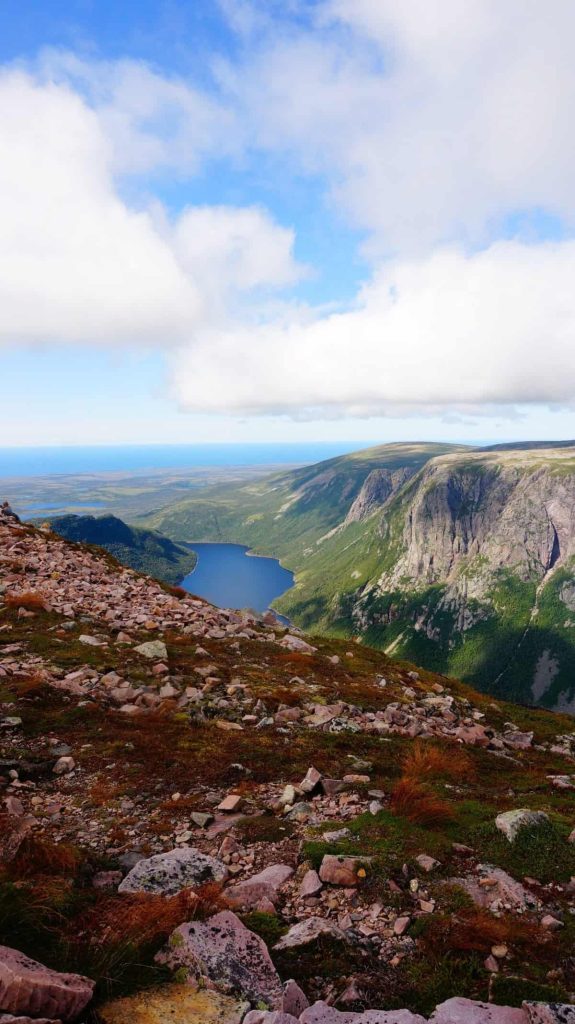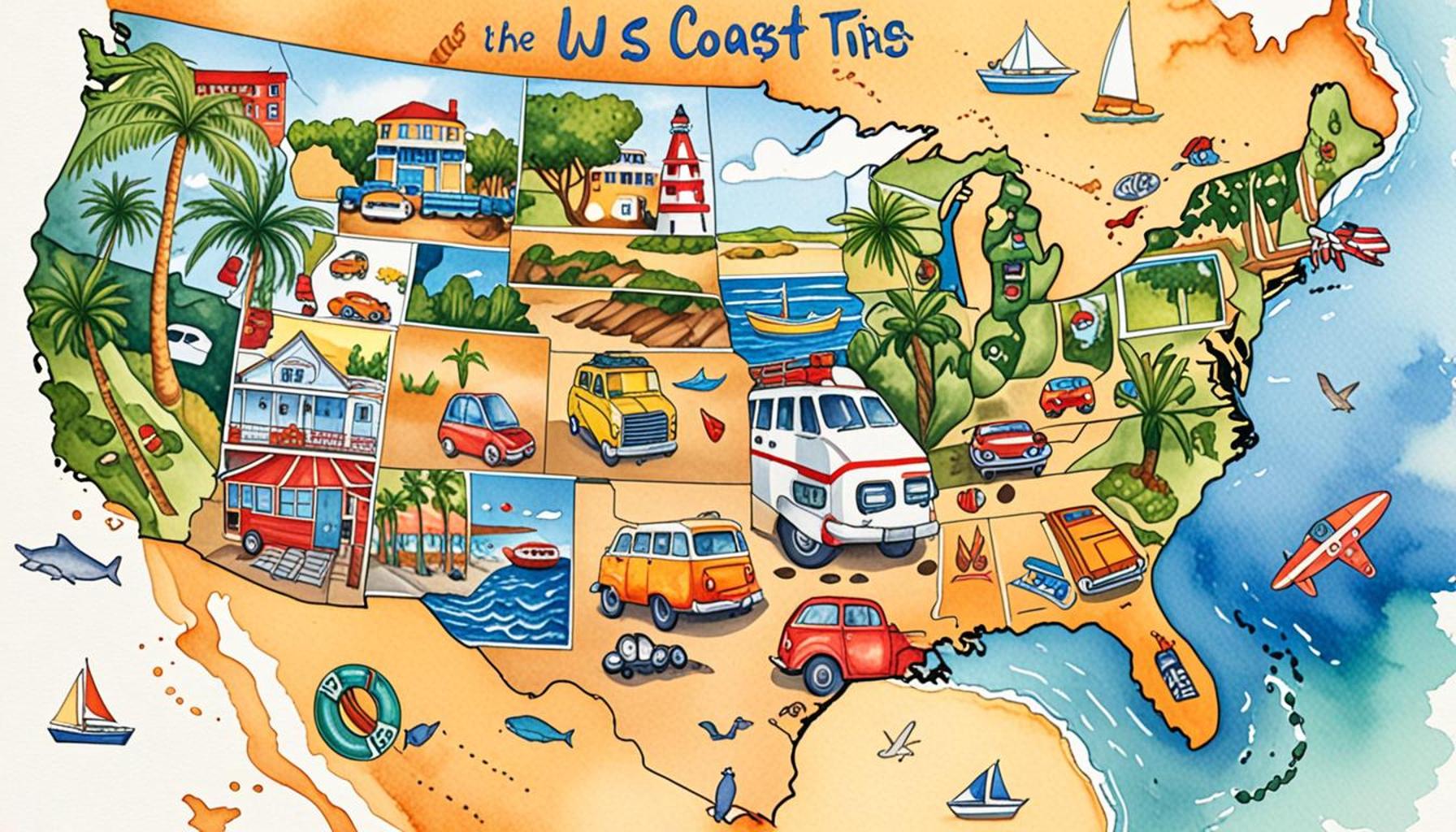Outdoor Adventures: How to Plan an Affordable Trip to National Parks

Introduction
For many, exploring national parks is the ultimate way to reconnect with nature. With breathtaking landscapes and diverse wildlife, these parks offer unparalleled opportunities for adventure. However, planning an unforgettable experience without breaking the bank requires some savvy.
Here are some essential tips to keep your trip both enjoyable and affordable:
- Timing is everything: Visit during off-peak seasons to avoid high entrance fees and crowded trails. For instance, spring and fall often provide pleasant weather and allow you to explore parks like the Great Smoky Mountains without the summer rush.
- Accommodations: Consider camping or staying in budget-friendly lodges or hostels near the park. Many parks, such as Zion and Yellowstone, offer campgrounds at reasonable rates, allowing you to immerse yourself fully in the wilderness while respecting your wallet.
- Meal planning: Pack your own meals or take advantage of local farmers’ markets for fresh, affordable options. Preparing a delicious picnic with local produce not only saves money but enhances your overall experience of the earthy surroundings.
The United States is home to over 60 national parks, each boasting unique attractions and experiences. Take, for example, the majestic beauty of Yosemite with its towering granite cliffs, or the surreal landscapes of Badlands, characterized by its rugged terrain and striking formations. From coastal parks like Acadia in Maine to the desert vistas of Big Bend in Texas, these natural treasures await your discovery.
Additionally, consider obtaining an America the Beautiful pass, which grants access to all national parks for a year at one low price. This pass can be a game changer for those planning multiple visits or exploring numerous parks across the country.
With some careful planning and insider knowledge, you’ll find that embarking on an outdoor adventure is not only feasible but also enriching. The diverse ecosystems, towering landscapes, and serene environments create opportunities for activities such as hiking, biking, or simply rejuvenating in nature’s embrace.

This article will guide you through the steps needed to plan an affordable trip to some of America’s most stunning natural wonders. Armed with the right tips and information, you’re ready to venture into the great outdoors and create lasting memories without overspending.
Essential Tips for Affordable National Park Trips
Planning an affordable trip to national parks does not require sacrificing the quality of your experience. With mindful choices, you can enjoy stunning scenery and diverse ecosystems without stretching your budget. Here are some key strategies to maximize your adventure while keeping costs down.
Choose the Right Park
Not all national parks require a hefty travel budget. Research parks based on your location and interests. Some parks, like Shenandoah in Virginia or Joshua Tree in California, can be reached without extensive travel costs. Identifying parks that are within driving distance can reduce expenses on airfare and rental cars. Furthermore, parks offering free admission days or special promotions can add to your savings.
Plan Your Activities Wisely
National parks are treasure troves of activities, but not all require spending extra cash. Many parks offer free ranger-led programs, from guided hikes to educational talks that engage visitors of all ages. Additionally, consider the following cost-effective activities:
- Hiking: Always a favorite, hiking allows you to explore the park’s natural beauty without spending a dime. Some of the best trails, like the Angels Landing in Zion or the Half Dome in Yosemite, offer breathtaking views for those willing to exert themselves.
- Biking: Bring your own bike, or rent one at park outlets, to explore the park on two wheels. This can be an exciting way to cover more ground while enjoying the scenery.
- Wildlife Watching: The chance to see bison, elk, or bald eagles in their natural habitat makes for unforgettable memories. Bring binoculars and a field guide to enhance your experience.
Leverage Technology
In the digital age, a wealth of resources is at your fingertips. Use apps and websites that provide essential information on trails, weather conditions, and points of interest. Websites like AllTrails or National Park Service offer detailed trail maps and reviews from fellow adventurers, ensuring you select the best hikes while avoiding crowded spots. Moreover, social media platforms often feature user-generated content from visits that can inspire your itinerary.
Travel in Groups
There is strength—and savings—in numbers. Traveling with family or friends can significantly reduce costs. Carpooling saves on fuel, while sharing lodging expenses makes staying near the parks more manageable. Organizing group meals, where everyone contributes a dish, further extends your budget. This communal approach allows for enhanced bonding experiences and shared memories.
By implementing these cost-saving strategies, you’re well on your way to planning an affordable trip to national parks. Whether you’re gazing at the towering cliffs of Yosemite or exploring the vibrant ecosystems of Everglades, there’s no reason why financial constraints should deter your adventurous spirit.
Essential Tips for Budget-Friendly National Park Adventures
Planning an adventurous and affordable trip to national parks involves strategic choices that enhance the experience while keeping expenses low. First and foremost, consider traveling during the off-peak season. Visiting national parks during shoulder seasons, like late spring or early fall, not only helps you avoid large crowds but also often comes with lower accommodation and entrance fees.Next, prioritize free or low-cost activities that national parks offer. Most parks provide endless options for hiking, wildlife viewing, and photography without any additional cost. Many parks also offer ranger-led programs or visitor center activities that are not only informative but also free.Accommodations significantly impact your overall budget. Instead of staying in hotels, look into camping. Many national parks have campgrounds that offer a much cheaper housing alternative. Campsite fees typically range from $15 to $40 per night, depending on the park, compared to hundreds for nearby hotels.When it comes to dining, prepare meals at your accommodations. Packing a cooler with food supplies allows you to enjoy picnics amidst stunning landscapes while saving money. Also, check local grocery stores in nearby towns for affordable supplies instead of dining in tourist-heavy areas.Finally, take advantage of annual passes if you plan to visit multiple parks throughout the year. These can provide substantial savings if you enjoy frequent outdoor excursions. For example, the America the Beautiful Pass grants access to over 2,000 federal recreation sites, including national parks, for one annual fee.Don’t forget that exploring nature is not only about the destination but also about creating unforgettable memories with family and friends. Stay open to spontaneous adventures along the way, as they often become the most cherished experiences. By implementing these tips, you’ll be well on your way to crafting a memorable and economical national park adventure.
| Category | Description |
|---|---|
| Off-Peak Travel | Visiting during off-seasons reduces costs and crowds. |
| Free Activities | Hiking and ranger programs add adventure without extra fees. |
| Camping | Affordable alternative to hotels; fees are budget-friendly. |
| Meal Preparation | Packing meals saves money and enhances your park experience. |
| Annual Passes | Great for frequent visitors; access to multiple sites. |
Maximizing Savings on Accommodations and Meals
Saving on accommodations and meals can dramatically lower the overall cost of your national park adventure. With a bit of planning and creativity, it’s possible to enjoy your stay while remaining budget-conscious.
Camping Considerations
One of the most affordable ways to experience a national park is by camping. Most parks have established campgrounds with affordable fees, often less than $30 per night. Staying in these sites allows you direct access to the park’s natural beauty without the high costs associated with hotels. Be sure to reserve your spot early, especially during peak season, as campsites can fill up quickly. Additionally, consider bringing your own camping gear, like tents and sleeping bags, to avoid rental fees. If you’re looking for a unique experience, look for campgrounds that offer amenities like fire pits or nearby lakes for swimming, enhancing your outdoor adventure.
Hostels and Budget Lodging
If camping is not your preferred style, seek out budget lodging options such as hostels or motels nearby. Websites like Hostelworld and Airbnb provide an array of choices, from shared spaces to entire homes, often at significantly lower prices than traditional hotels. Some local accommodations offer discounts to travelers visiting the parks, so it’s worth researching deals that can further help you save.
Food on a Budget
When it comes to meals, convenience often leads to higher costs, especially in national park areas where dining options may be limited. To combat this, consider the following strategies to eat well without overspending:
- Pack Your Own Meals: Preparing your meals allows you to control what you eat and how much you spend. Pack picnic-friendly food such as sandwiches, fruits, and snacks to sustain you during your park adventures. Don’t forget a reusable water bottle to stay hydrated!
- Utilize Camp Stoves: If you opt for camping, a portable camp stove can diversify your meal options. Simple dishes like pasta, stir-fries, or oatmeal for breakfast can be prepared while enjoying the great outdoors, saving you money on eating out.
- Local Groceries: Instead of eating in the park restaurants, consider stopping by local grocery stores to strike deals on fresh produce and snacks. Many towns near national parks have charming markets that always welcome travelers.
Off-Peak Travel and Special Discounts
Timing is everything when planning your trip. If your schedule allows for it, try to travel during off-peak seasons. Visiting national parks in the shoulder seasons—spring and fall—can lead to significant savings. Not only are park fees often reduced, but accommodations and food prices typically drop as well. Furthermore, many parks offer annual passes that pay for themselves within just a few visits, making this a worthwhile investment for frequent explorers.
By carefully considering your accommodations and meals, you can substantially cut down on costs. With more budget-friendly options, a national park adventure becomes attainable for everyone, ensuring memorable experiences in nature without breaking the bank.
Conclusion: Embrace Nature without Breaking the Bank
In conclusion, planning an affordable trip to national parks doesn’t have to be a daunting task. By utilizing strategies such as camping, seeking budget lodging, and preparing your own meals, you can explore the vast beauty of America’s national parks without overspending. Remember, the essence of these outdoor adventures lies in the experiences and memories you create, not the money you spend.
Moreover, timing your visit during off-peak seasons can further enhance your savings while allowing you to enjoy the parks in a more tranquil setting. Consider investing in an annual pass if you’re a frequent visitor, turning your passion for nature into cost-effective adventures over time.
With various options available, from campground amenities to local markets that offer fresh produce at reasonable prices, there is a world of opportunity waiting for you at these natural gems. Your journey into the wild can be both enriching and budget-friendly, offering moments of peace and discovery without the constraints of high expenses.
Take the leap into your next outdoor adventure with confidence! Armed with the right planning and tips, you can embark on a memorable journey through stunning landscapes, whether you choose to hike the trails of Yosemite, explore the depths of the Grand Canyon, or witness the vibrant wildlife of Yellowstone. So pack your bags, dust off your hiking boots, and prepare to create unforgettable experiences in America’s treasured national parks.



